We scoot to school every day. Our journey takes us along a lovely tree-lined tarmac path, uphill on the way to school and downhill on the way back. Over the last few months, the kids have made lots of observations about the ease ( or difficulty ) of scooting without realising the science behind it.
For example:
Scooting uphill is slower and hurts our legs more than scooting downhill.
When the path is clear of leaves, twigs and other debris, it's easier and faster to scoot.
It's easier to balance on a three-wheel scooter than a two-wheel scooter.
These are all brilliant observations that make complete sense. It does take more effort to scoot uphill. We need to use extra force to move the scooter and ourselves uphill. It's also much easier to balance on three wheels than two.
Over the weekend, we took our scooter science a step further by turning it into a more structured investigation. Using knowledge from the school run, we made predictions about the expected results.
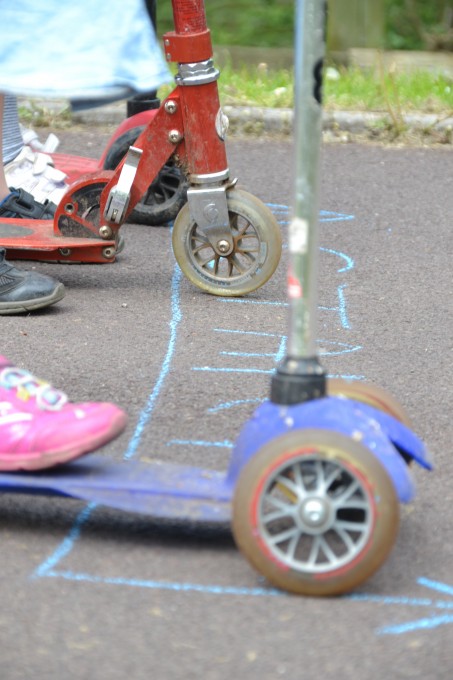
Question
Which scooter and scooter rider will travel the furthest down a hill?
Aim: To investigate how different factors affect scooter performance.
Prediction
S being the lightest will travel the furthest on the Silver Bullet Scooter ( we know from experience this is the fastest scooter we own )
What you need:
- A Small Hill - make sure this is safe for your riders
- Willing scooter riders
- Scooters
- Chalk
- Timer
First, we discussed which factors might affect how our scooters behaved. We looked at the scooters and each other and we decided that the speed of a scooter could depend on some of the following
1. How steep the hill is.
2. How hard we push.
3. How new the scooter is.
4. How many wheels the scooter has.
5. How big the rider is.
6. How big the wheels are.
Method
Draw a START and FINISH line in chalk along the path.
Have a couple of tries, just racing the scooters down the hill.
Line up your riders on the start line, using different style scooters if possible.
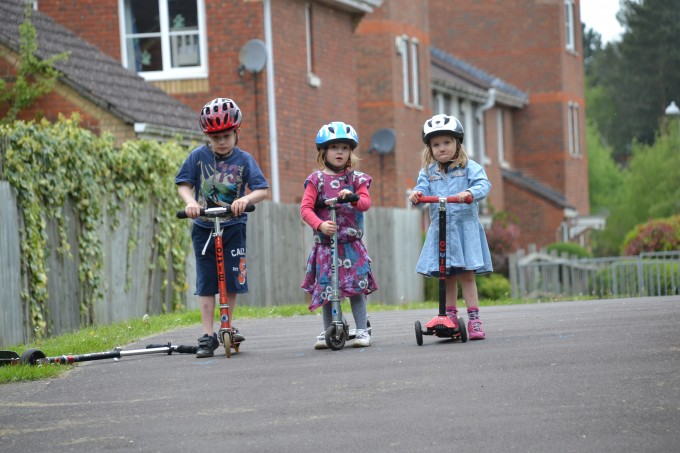
Our scooters:
- Z ( age 7 ) had a silver Bullet Micro Scooter
- S ( age 5 ) had a red Sprite Micro Scooter
- H ( age 3 ) had a Mini Micro Scooter or the red Maxi Micro
Test 1: Roll down the hill—no pushing allowed! Try recording the time it takes for each rider to pass the finish line and the distance travelled by each scooter.
Repeat 3 times and record the results.
Results:
Scooter order was Silver Bullet, Red Sprite, Mini Micro.
Test 2 - Swap Scooter riders, roll down the hill, does the order change?
Results
The order was still Silver Bullet, Red Sprite and Mini Micro regardless of the rider, so our prediction was only half correct.
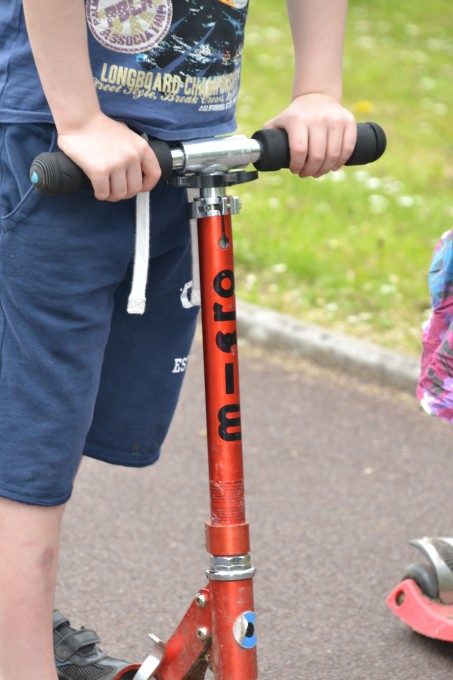
The silver bullet scooter consistently travelled the furthest. We also noticed that bigger people seemed to go further, especially if they leaned forward a little or crouched down.
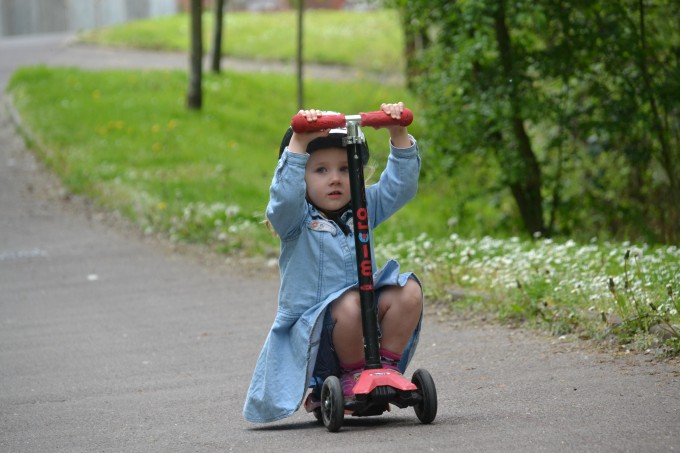
Test 3 - How far do the scooters travel with a big push?
Inspired by our hill investigation, Z designed his own investigation on flat ground. He marked how far his scooter travelled after one push, then two pushes, and so on. He then asked his Dad to try the same six pushes on the same scooter.
Results
Z travelled the furthest with 6 pushes. Could it be that on flat ground being bigger is a disadvantage? Can you think why this would be?
The Science Bit
Why did the scooter travel further when we crouched down?
Crouching down reduces air resistance as you make yourself smaller and hide behind the handle bar of the scooter. Less air resistance means you travel faster and further.
Why did the Silver Bullet Scooter travel furthest with all riders?
We're not sure why the bullet scooter was the fastest. Its wheels look to be the same size as the Sprite, but it is a little heavier, which helps overcome air resistance. The wheels on the Micro Bullet also seemed to turn a little easier and did spin for longer when we let them spin freely. Perhaps there was more friction acting on the Sprite wheels slowing them down?
Why we love Micro Scooters
We bought our first Micro Scooter for Z when he was just 18 months old, he used it on a daily basis for many years. The very same scooter ( with a new back wheel and brake ) is still used daily by H on the school run. We've found Micro Scooters to be brilliant quality, sturdy and very hard wearing. We only had to replace the back wheel on the Mini Micro as Z used it so much that the wheel became square from using the brake so much, and that was after a lot of use. Replacement parts were easy to order and simple to fit.
Z has had his Micro Sprite Scooter for two years, and that, too, has been fantastic, although he is now starting to try jumps and is hankering after a stunt scooter.
S has a Maxi Micro, I felt she needed the extra stability of the Maxi over the Sprite as she is quite small for her age. Our scooters are used daily, thrown in the boot of the car, jumped on, raced with, and we've never had any problems with them at all. I honestly wouldn't buy any other brand.
Micro Scooters kindly donated a blue Micro Sprite Scooter to my son's school for the summer raffle. I know it will make one little boy or girl very happy!
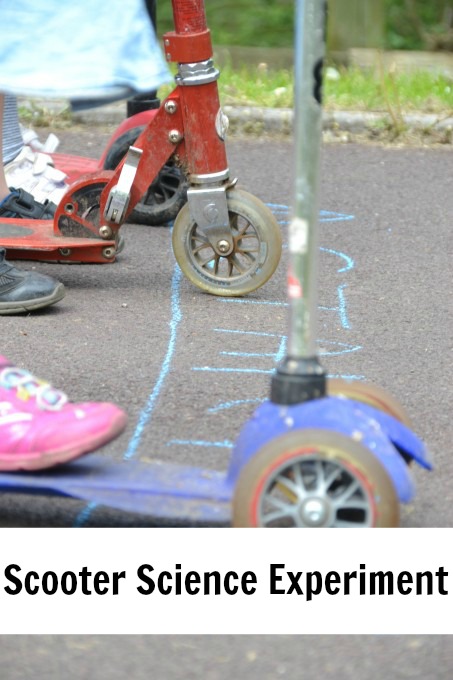
Last Updated on June 18, 2025 by Emma Vanstone
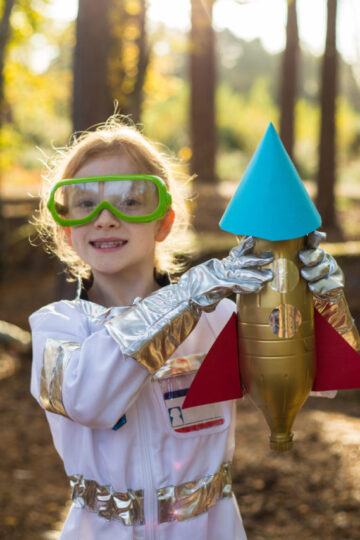

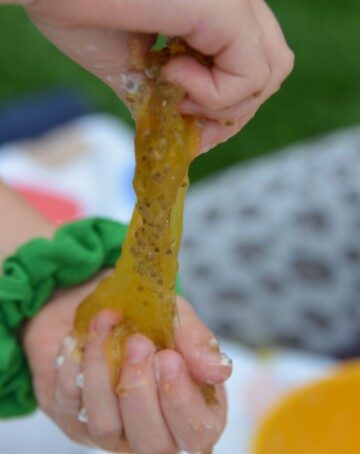
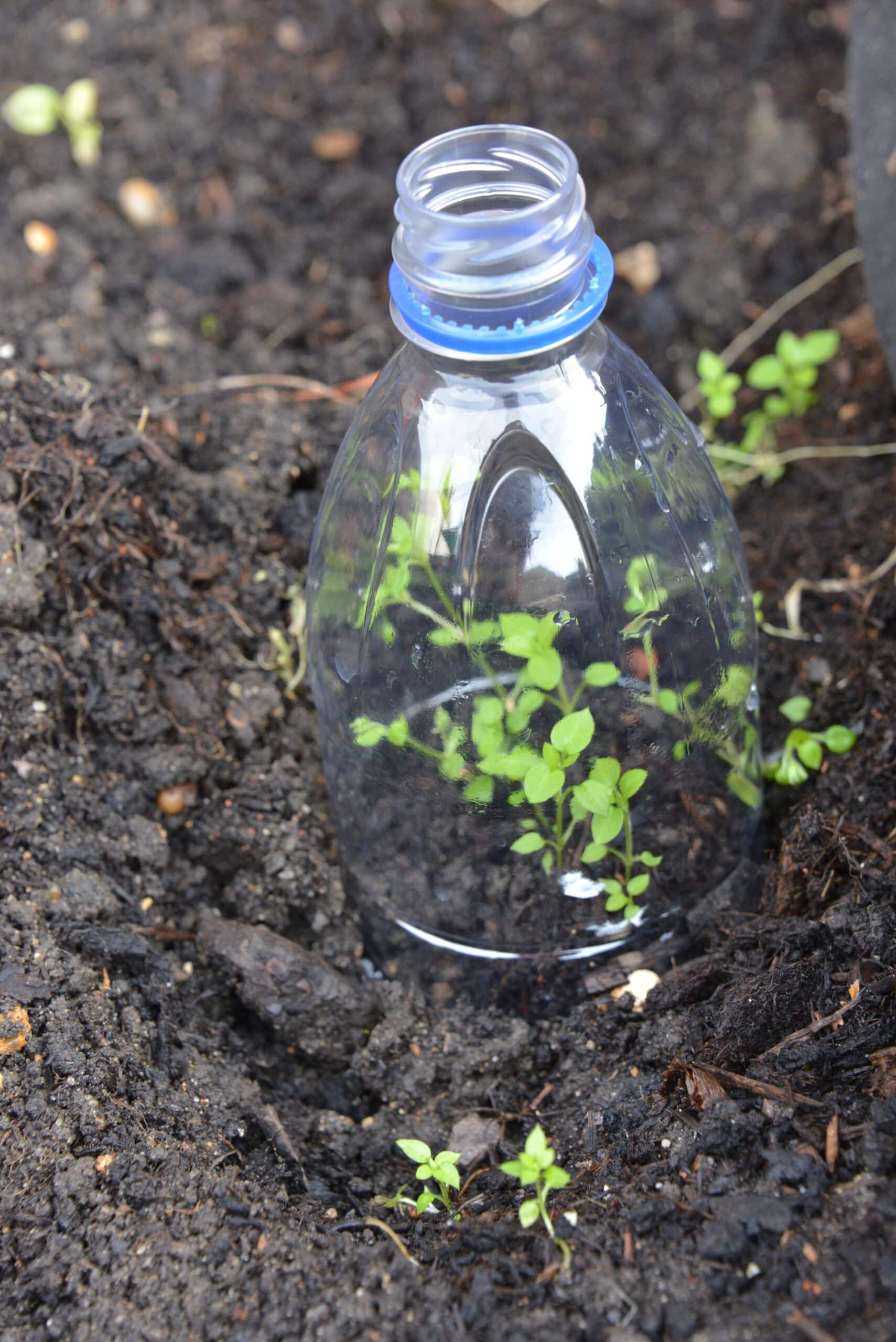
Amanda says
This is a fab idea, we are so doing this after school today!
Emma Vanstone says
Thanks Amanda 🙂